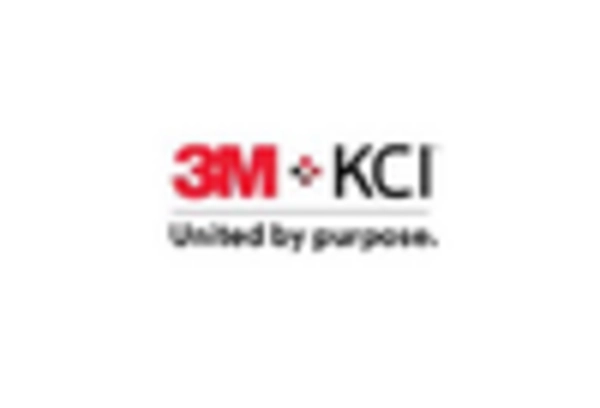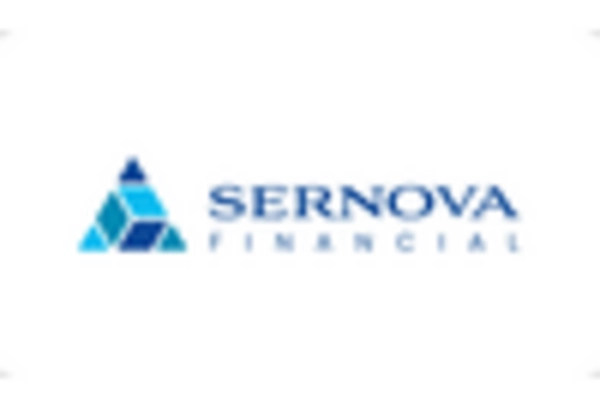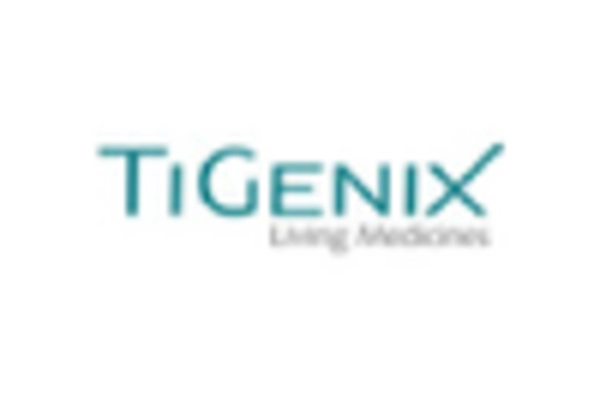Rising Incidence of Chronic Diseases
The increasing prevalence of chronic diseases in the GCC region is a primary driver for the regenerative medicine market. Conditions such as diabetes, cardiovascular diseases, and neurodegenerative disorders are on the rise, necessitating innovative treatment solutions. According to recent health statistics, the GCC countries have witnessed a surge in diabetes cases, with estimates suggesting that around 20% of the adult population is affected. This growing patient demographic is likely to propel demand for regenerative therapies, which offer potential for long-term recovery and improved quality of life. As healthcare systems in the region adapt to these challenges, investments in regenerative medicine are expected to increase, fostering advancements in research and development. Consequently, the regenerative medicine market is poised for significant growth as it addresses the urgent need for effective treatments for chronic conditions.
Investment in Research and Development
Investment in research and development (R&D) is a crucial driver for the regenerative medicine market in the GCC. Governments and private entities are increasingly allocating funds to support innovative research initiatives aimed at developing advanced therapies. For instance, the GCC region has seen a rise in funding for stem cell research and tissue engineering projects, with investments reaching approximately $500 million in recent years. This financial commitment not only enhances the scientific landscape but also encourages collaboration between academic institutions and industry players. As a result, the regenerative medicine market is likely to benefit from breakthroughs in technology and treatment methodologies, ultimately leading to improved patient outcomes and expanded therapeutic options. The focus on R&D is expected to sustain the momentum of growth within the regenerative medicine market, positioning the region as a hub for innovation.
Strategic Partnerships and Collaborations
Strategic partnerships and collaborations among key stakeholders are emerging as a vital driver for the regenerative medicine market. Companies, research institutions, and healthcare providers in the GCC are increasingly joining forces to leverage expertise and resources. These collaborations facilitate the sharing of knowledge and accelerate the development of new therapies. Recent data suggests that collaborative projects in the region have increased by 30% over the past few years, indicating a robust trend towards cooperative innovation. Such partnerships not only enhance the research landscape but also streamline the commercialization process for regenerative therapies. As stakeholders work together to overcome challenges and capitalize on opportunities, the regenerative medicine market is likely to experience accelerated growth, fostering a more dynamic and competitive environment.
Aging Population and Demand for Advanced Therapies
The aging population in the GCC is a significant driver for the regenerative medicine market. As life expectancy increases, the demand for advanced therapeutic options to address age-related health issues is also rising. The demographic shift indicates that by 2030, approximately 15% of the population in the GCC will be over 60 years old. This trend suggests a growing need for regenerative therapies that can effectively treat degenerative diseases and enhance the quality of life for older adults. Healthcare providers are increasingly recognizing the potential of regenerative medicine to offer solutions that traditional therapies may not provide. Consequently, the regenerative medicine market is likely to expand as it caters to the unique healthcare needs of an aging population, fostering the development of innovative treatments tailored to this demographic.
Increased Awareness and Acceptance of Regenerative Therapies
Increased awareness and acceptance of regenerative therapies among healthcare professionals and patients are driving growth in the regenerative medicine market. Educational initiatives and outreach programs have played a pivotal role in informing stakeholders about the benefits and potential of regenerative treatments. Surveys indicate that over 70% of healthcare providers in the GCC are now familiar with regenerative medicine concepts, leading to a greater willingness to incorporate these therapies into clinical practice. This shift in perception is likely to enhance patient confidence in seeking regenerative treatments, further propelling market growth. As acceptance continues to rise, the regenerative medicine market is expected to witness an influx of new therapies and technologies, ultimately improving patient access to innovative healthcare solutions.

















Leave a Comment